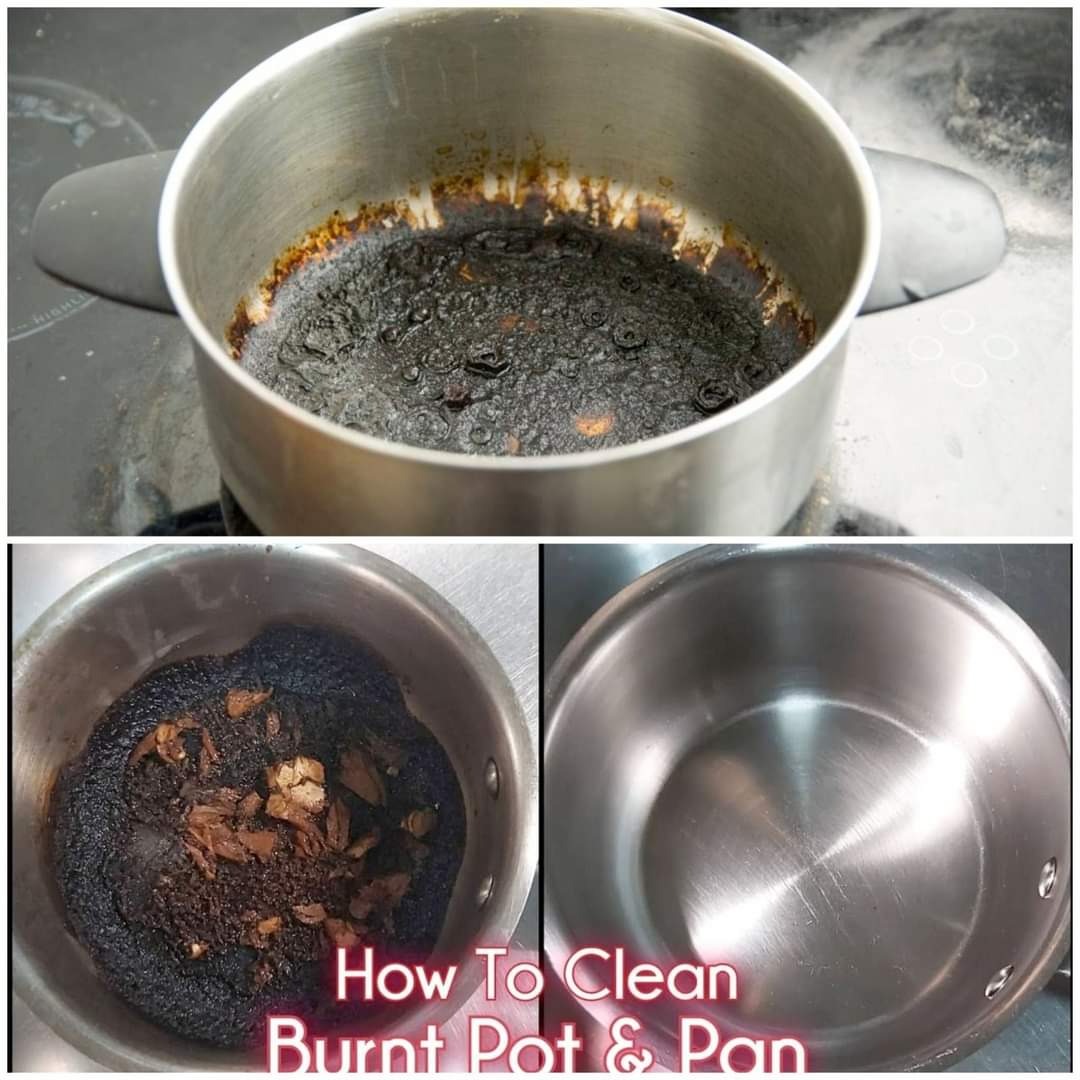ADVERTISEMENT
Instructions:
1. Fill the Pot or Pan with Water:
- Start by filling your burnt pot or pan with enough water to cover the burnt areas. Be sure to cover the stubborn stains with water for the cleaning process to work effectively.
2. Add Vinegar:
- Add about 1 cup of white vinegar to the water. Vinegar helps to break down the charred food and grease, making it easier to clean.
3. Bring to a Boil:
- Place the pot or pan on the stove over medium-high heat and bring the vinegar-water mixture to a boil. As the mixture heats up, steam will start to loosen the burnt food and grease from the bottom of the pan.
4. Add Baking Soda:
- Once the water is boiling, remove the pot from the heat. Add about 1-2 tablespoons of baking soda to the boiling mixture. The baking soda will react with the vinegar, creating a fizzing action that helps lift the burnt residue from the surface of your cookware.
5. Let It Sit:
- Allow the mixture to sit for 10-15 minutes. The fizzing action, combined with the heat and steam, will work wonders to loosen the burnt bits.
6. Scrub Away the Residue:
- After the mixture has had time to sit, use a wooden spoon or spatula to gently scrape away the loosened food particles. If needed, you can use a non-abrasive sponge or scouring pad to scrub the surface. Avoid using metal scrubbers, especially on nonstick or enamel-coated cookware, as they can cause damage.
7. Rinse and Wash:
- Once most of the burnt material has been removed, pour out the mixture, and wash the pot or pan with warm, soapy water. Give it a good scrub with your sponge to remove any remaining residue.
8. Dry and Polish:
- After rinsing, dry your cookware with a clean towel or paper towel. For stainless steel pans, you can even buff the surface with a bit of olive oil on a soft cloth to restore its shine.
Tips for Different Types of Cookware:
- Nonstick Pans: Always use a non-abrasive sponge or cloth when cleaning nonstick pans to avoid damaging the coating. This cleaning hack should help you avoid any harsh scrubbing that could scratch the surface.
- Cast Iron Pans: For cast iron, avoid using soap. After following the hack above, use a chainmail scrubber or stiff brush to remove any remaining residue. Once cleaned, dry the pan thoroughly and season it with a thin layer of oil to keep it well-maintained.
- Stainless Steel Pans: Stainless steel cookware can be a bit more stubborn, but this hack will still work wonders. If there’s any lingering stain, try adding a bit of cream of tartar mixed with water to polish the surface and remove any remaining discoloration.
Why This Hack Is Better Than Traditional Scrubbing:
- Minimal Effort: The boiling vinegar and baking soda combination does most of the heavy lifting, so you don’t have to scrub for hours. Just let the steam and fizz work their magic.
- Non-Toxic: This method uses natural, safe ingredients that you probably already have in your pantry. Unlike harsh chemical cleaners, vinegar and baking soda are non-toxic and safe for your family and pets.
- Prevents Damage: By avoiding harsh scrubbing or abrasive cleaners, this hack protects your pots and pans from potential damage. It’s gentle on all types of cookware, ensuring they last longer.
- Cost-Effective: There’s no need for expensive cleaning products. Baking soda and vinegar are affordable and work incredibly well together to remove stubborn stains.
Final Thoughts:
Cleaning burnt pots and pans no longer needs to be a stressful or time-consuming task. With this easy hack using baking soda and vinegar, you can effortlessly remove burnt-on food and grease, restoring your cookware to its original condition. It’s a simple, effective, and eco-friendly solution that saves you time, energy, and money.
So, the next time you find yourself faced with a burnt pot or pan, try this easy cleaning hack and enjoy the satisfaction of spotless, like-new cookware with minimal effort!
ADVERTISEMENT
